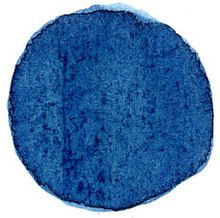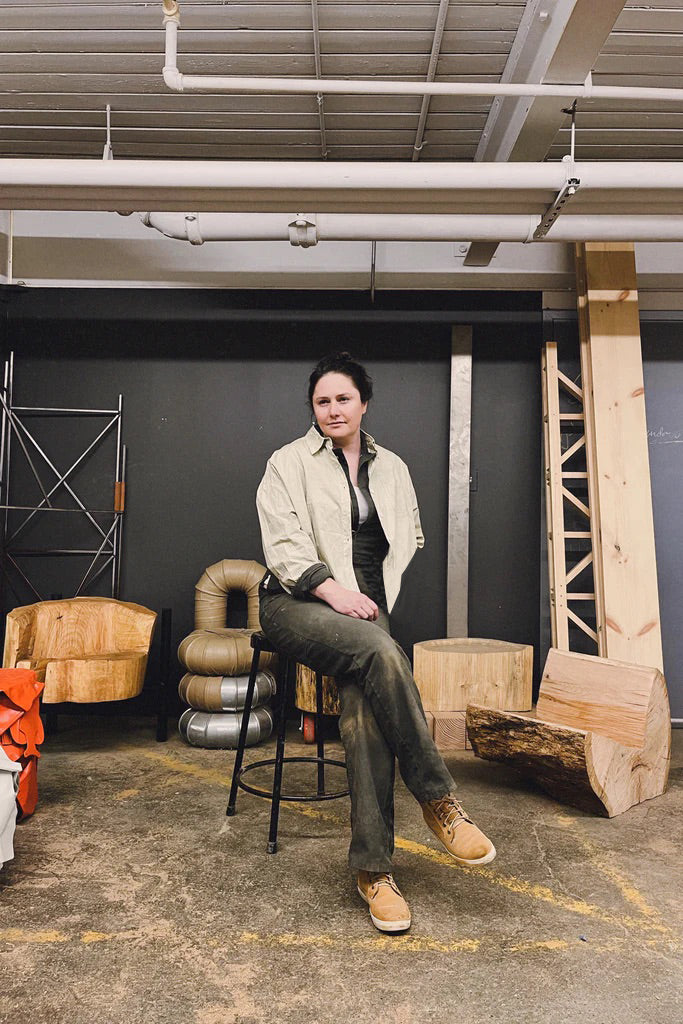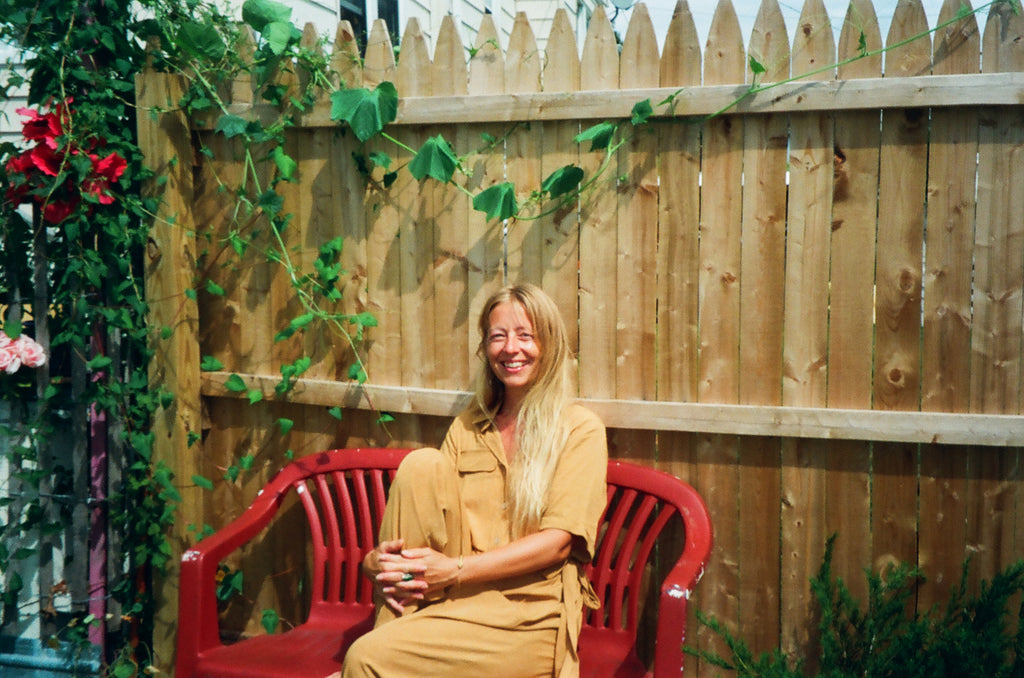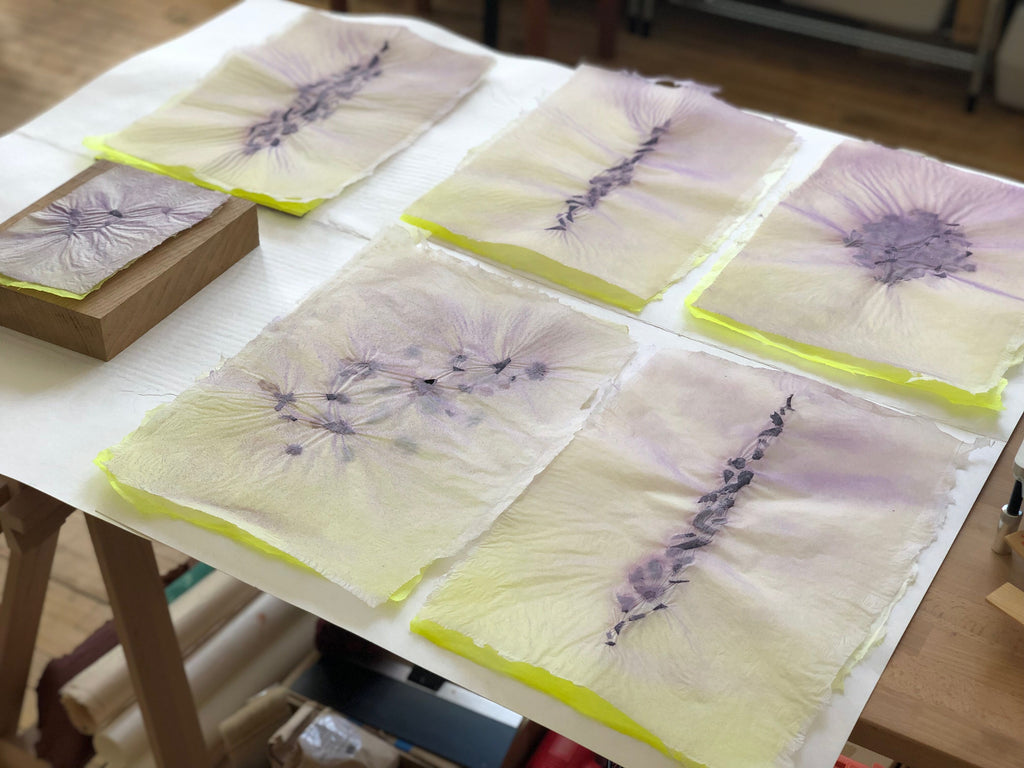KIMMY QUILLIN, ARTIST

Kimmy Quillin, Artist, wears the Colorant Unison Jacket, 6-plant Space Knit pants and Colorant Mezzo Crew in Cacao in her studio in Brooklyn, NY.
Indonesian sappanwood (Caesalpinia sappan) is a tropical tree native to Southeast Asia. It is highly valued for its vibrant red dye, which produces a deep red color that has been used for centuries for textile dyeing, batik printing, and traditional medicine. The process of extracting this dye is a meticulous and time-consuming endeavor. It begins by harvesting mature sappanwood trees and cutting them into small pieces. The pieces are boiled in water to release the dye compounds present in the heartwood. The resulting liquid is strained and concentrated to obtain a rich, red colorant that can be shifted to pinks, oranges and browns depending on what mordant is used.
What are your current motivators and inspiration?
Inspiration is my favorite mood enhancer. Right now I am visiting and revisiting the Ruth Asawa drawings exhibit “Through Line” at the Whitney, as well as Judy Chicago’s “Herstory” at the New Museum. Both of these women worked their tails off throughout their entire lives and created an astonishing amount over many decades. Ruth Asawa is the queen of making the most out of the materials around her. If someone gave her a bouquet of flowers, she meticulously drew them into an exquisite work of art. Through her lines, you can tell the exact weight of a flower head hanging off a spindly stem over the edge of a bouquet. Her drawings are full of all the patience in the universe. And I could watch Judy Chicago’s Atmospheres films for days. Between 1968-1974 she set up technicolored smoke shows in the desert with nude women painted monochrome head to toe. The simple premise of them walking forward or interacting with colored smoking flares in that hot place is so simple but so powerful. Every time I see one it’s like, “Damn, YEAH.”
I am also constantly reading (mostly non-fiction, lots of biographies, sometimes exhibition catalogs) and bringing themes from that learning into my work. I currently have from the library the catalog from Hilma af Klint’s show at the Guggenheim “Paintings for the Future.” Judy Chicago’s autobiography is on deck, and Wassily Kandinsky’s Concerning the Spiritual in Art is also in the queue. I also love anything by N.K. Jemisin.
How did your interest in natural dye come about and how have you incorporated it into your work?
I started paying attention to several artists who work with natural pigments around 2020 including Cara Marie Piazza, Amanda Morales, Wild Pigment Project, and the wealth of info distributed by Seattle-based dye company Botanical Colors. In one of her recent newsletters, natural pigment artist and activist Tilke Elkins asked what might change if more artists worked with natural pigments, how the messages they were inspired to send with their work might change and how the art world as a whole might change. She writes, “As a paint maker, I think a lot about the ways in which people currently use (synthetic) paints, and how their practices would change if they moved to waste-stream-sourced paints instead. How much of what they do now would they be able to do using remediated paint materials? How much would they not be able to do, and how would that change the messages they communicate?” In this phase, I find myself drawn to organic shapes in general and have been particularly drawn to the curves and fold of leaves, pine cones and the human body.
Since June I have been working mostly with reclaimed/foraged dye materials: avocado, black bean and acorn. I use them to dye canvas which has been cut into premeditated shapes. I assemble these into a desired image by hand stitching them back together. Finally, I stretch it as I would a regular canvas. The result is a pseudo-quilted/appliqued canvas in varying dye shades with its seams and handmade-ness exposed. The depth and variation created by the dye are beautiful beyond what I could create by my hand alone.
What are some projects or upcoming bodies of work you are excited about? In addition to my own art practice, I am excited about writing and talking about the work of others. I had an inspiring conversation recently with artist Colleen Herman and Olympia gallery owner Ali Rossi while sitting on the gallery floor talking through Colleen’s current show. We discussed the concept for the show’s site-specific presentation, which works came slowly or quickly, the dialogue between different pieces, and stretching artistic boundaries. It inspired me to write an essay about it the next day which you can read on my website. Since then I have been planning to turn this into either a written or audio series where artists talk through their current show. It is a strange, significant moment when your most recent body of work is out of your studio and presented to the public, but you aren’t in the room with it every day. This poignant point of release and all the backstory that lead to it are what I want to be in dialogue about.
www.kimmyquillin.com
@kimmyquillin































